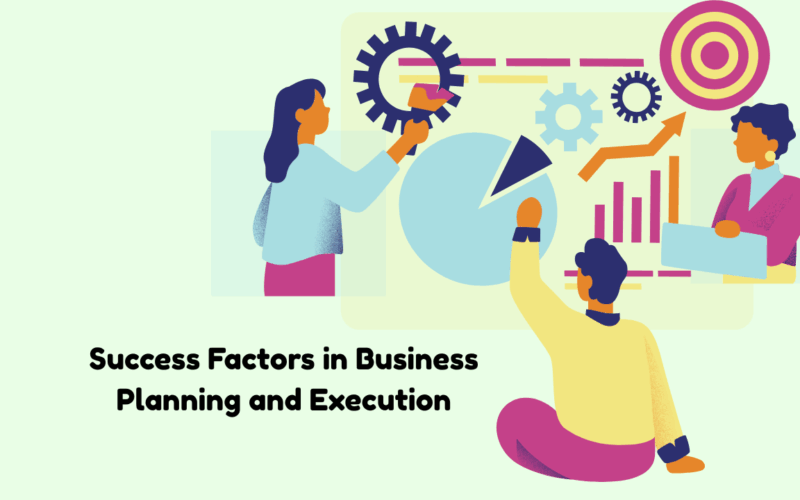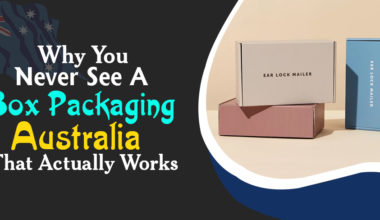Imagine launching a business that grows steadily, delights customers, and runs smoothly, like a well-tuned car cruising down an open road. That’s the power of effective business planning and execution—creating a clear roadmap and following through to turn your vision into reality. Whether you’re starting a small online shop or a local café, success depends on thoughtful preparation and consistent action. In 2025, with tools like free planning apps and digital marketing, anyone can build a thriving business. This guide shares six key success factors for business planning and execution, written in simple, beginner-friendly language. From setting a vision to tracking progress, these factors will help new entrepreneurs create a business that lasts and grows.
What Are Business Planning and Execution?
Business planning is like drawing a map for your company, outlining where you want to go and how to get there. It includes goals, strategies, and budgets. Execution is putting that plan into action—making sales, serving customers, or managing tasks. For example, a pet store might plan to sell 50 grooming packages monthly and execute by advertising on social media. Together, planning and execution ensure your business moves forward without wasting time or money. In 2025, affordable tools like Google Sheets or Later make these steps accessible, even for small businesses with $5,000 budgets.
Why Planning and Execution Drive Success
A solid plan without action is like a recipe you never cook—it’s useless. Likewise, action without a plan can lead to chaos, like driving without a destination. In 2025, economic shifts like rising costs or changing customer habits make planning and execution critical to stay competitive. Good planning clarifies your goals, while strong execution turns them into results, like increasing sales by 15% through a new website. The factors below are practical, low-risk ways to succeed, designed for beginners.
Six Key Factors for Business Planning and Execution Success
These factors are like the ingredients of a successful dish—each adds flavor to your business. They’re tailored for 2025 and easy to implement for new entrepreneurs.
1. Craft a Clear Vision and Goals
Your business vision is like a guiding star, showing where you’re headed. Ask: What do you want your business to achieve? Maybe it’s earning $50,000 in sales or serving 100 customers monthly. Write a one-sentence vision, like “Offer affordable, eco-friendly clothing online.” Break it into goals, like selling 20 shirts monthly by June 2025. Use Google Sheets (free) to track goals. A clear vision keeps your planning focused and execution on point, even for a $10,000 business.
2. Research Your Market Thoroughly
Understanding your market is like knowing the terrain before a hike. Research who your customers are, what they want, and what competitors offer. For example, a bakery might find customers prefer gluten-free options, leading to a new menu that boosts sales by 10%. In 2025, use free tools like Google Trends to spot customer preferences or X to see what people discuss. Spend an hour weekly researching to inform your plan and guide execution, ensuring you meet real needs.
3. Create a Lean Financial Plan
A financial plan is like a budget for your business, ensuring you don’t run out of fuel. Estimate costs (e.g., supplies, marketing) and revenue (e.g., sales). For a $20,000/year business, allocate 50% to operations ($10,000), 30% to growth ($6,000), and 20% to savings ($4,000). Use Wave (free-$16/month) to track expenses. The success100x.com factors for business success stress keeping finances lean to avoid overspending, like cutting a $20/month unused app to save $240 yearly. A lean plan supports smart execution, even on a tight budget.
| Financial Plan Breakdown | Percentage | Example ($20,000/year) |
|---|---|---|
| Operations | 50% | $10,000 (rent, supplies) |
| Growth | 30% | $6,000 (ads, inventory) |
| Savings | 20% | $4,000 (emergency fund) |
4. Build a Flexible Action Plan
An action plan is like a to-do list for your business, breaking goals into steps. For example, to sell 20 shirts monthly, your plan might include creating a website (Month 1), posting ads (Month 2), and emailing customers (Month 3). Use Notion (free) to organize tasks with deadlines. In 2025, stay flexible—adjust if ads don’t work by trying X posts. A flexible plan ensures execution adapts to surprises, like supply delays, keeping your business moving forward.
5. Leverage Simple Digital Tools
Digital tools are like a Swiss Army knife for your business—versatile and efficient. In 2025, use Later ($0-$16/month) for social media scheduling or Wix ($0-$27/month) for a website. For example, a café using Wix for online orders might increase sales by 12%. Start with one free tool, like Google My Business, to list your business online. Tools streamline execution, making your plan easier to follow, even for businesses with $5,000 budgets.
6. Track and Refine Your Progress
Tracking progress is like checking your speedometer—it shows if you’re on pace. Monitor metrics like sales, website visits, or customer feedback monthly. For example, a shop tracking sales might find a new ad doubles clicks, guiding better execution. Use Google Analytics (free) to track online performance or a notebook for manual records. Adjust your plan based on data, like focusing on top-selling products. Regular tracking ensures your planning and execution stay aligned for success.
Tools to Boost Planning and Execution
In 2025, these tools make success easier:
- Planning Tools: Google Sheets or Notion for goals and tasks ($0).
- Market Research: Google Trends or X for customer insights ($0).
- Financial Tools: Wave or FreshBooks for budgeting ($0-$16/month).
- Digital Tools: Wix or Later for online presence ($0-$27/month).
- Analytics Tools: Google Analytics for tracking progress ($0).
These affordable tools help small businesses with $5,000 budgets plan and execute effectively.
Getting Started in 2025
Take these first steps to kick off your plan:
- January: Write a one-sentence vision, research your market for one hour.
- April: Create a financial plan, cut one $10/month expense.
- August: Launch a website with Wix, track sales monthly.
- December: Add a new product based on customer feedback, save $100/month.
Growing Your Business Over Time
As your business grows, refine your approach. By 2026, add a second sales channel, like selling on Etsy, or increase savings to $200/month. By year five, a $15,000 business could grow to $25,000 with a website and targeted ads. By year 10, reinvesting profits into new products could double revenue. Steady planning and execution build long-term success without rushing or risking stability.
Learning to Plan and Execute Better
Knowledge sharpens your skills. In 2025, read The E-Myth Revisited or follow X business creators for planning tips. A $25 course on digital marketing could boost sales by 10%. Learning helps you avoid errors, like overspending on ads, and improves your execution, even on a small budget.
Why Planning and Execution Work for Any Business
Success doesn’t depend on a big budget—just smart strategies. A $10,000 business with a clear plan and consistent execution can outlast a $50,000 business with no direction. In 2025, free tools and customer-focused planning make success possible for any entrepreneur, no matter the scale.
Conclusion
Effective business planning and execution come from a clear vision, market research, a lean financial plan, a flexible action plan, simple digital tools, and regular tracking. Start today: write one goal, research your market, or try a free tool. With steady effort and 2025’s technology, you can build a business that grows strong, stays focused, and achieves lasting success.











